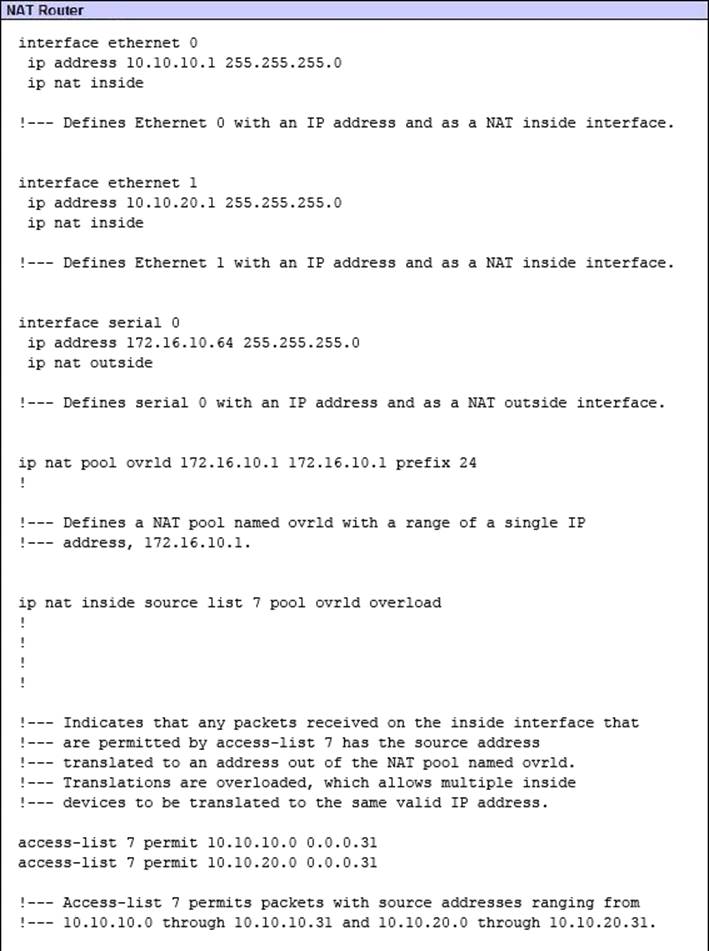- All Exams Instant Download
Which functions do the two commands serve in this scenario?
A network engineer is asked to configure a "site-to-site" IPsec VPN tunnel. One of the last things that the engineer does is to configure an access list (access-list 1 permit any) along with the command ip nat inside source list 1 int s0/0 overload.
Which functions do the two commands serve in this scenario?
A . The command access-list 1 defines interesting traffic that is allowed through the tunnel
B . The command ip nat inside source list 1 int s0/0 overload disables "many-to-one" access for all devices on a defined segment to share a single IP address upon exiting the external interface.
C . The command access-list 1 permit any defines only one machine that is allowed through the tunnel.
D . The command ip nat inside source list 1 int s0/0 overload provides "many-to-one" access for all devices on a defined segment to share a single IP address upon exiting the external interface.
Answer: D
Explanation:
Configuring NAT to Allow Internal Users to Access the Internet Using Overloading

Note in the previous second configuration, the NAT pool “ovrld” only has a range of one address. The keyword overload used in the ip nat inside source list 7 pool ovrld overload command allows NAT to translate multiple inside devices to the single address in the pool.
Reference: http://www.cisco.com/en/US/tech/tk648/tk361/ technologies_tech_note09186a0080094e77.shtml
Latest 300-101 Dumps Valid Version with 798 Q&As
Latest And Valid Q&A | Instant Download | Once Fail, Full Refund
Subscribe
Login
0 Comments
Inline Feedbacks
View all comments

